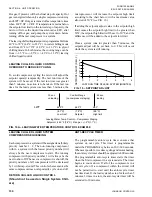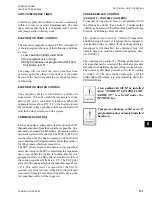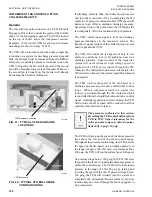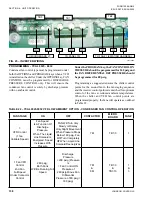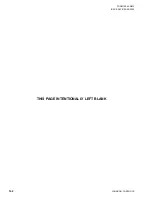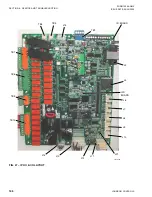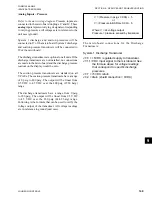
JOHNSON CONTROLS
136
FORM 150.66-NM2
ISSUE DATE: 09/25/2020
SECTION 8 - UNIT OPERATION
FIG. 21 – TYPICAL VFD ENCLOSURE
LOCATIONS
LOW AMBIENT FAN CONTROL OPTION
YCAL0025-0032 UNITS
General
The low ambient option consists of a VFD (Variable
Frequency Drive) that controls the speed of the first fan
(Fan 1) in the fan staging sequence. The VFD is located
on the top of chiller above the compressor section.
Examples of the typical VFD location and enclosure
mountings are shown in Figs. 21 & 22.
The VFD will control fan speed when only a single fan
is running on a system. As discharge pressure rises and
falls, the fan speed will be increased from zero RPM to
full speed. As discharge pressure continues to rise, the
VFD will operate the fan at full speed and the second
fan will be brought on in a system, if needed. Whenever
the second fan is brought on, the inverter will already
be running the first fan at full speed.
If discharge pressure falls, the chiller microprocessor
will turn the second fan off by de-energizing the fan
contactor. If pressure continues to fall, VFD speed will
decrease in an effort to maintain discharge pressure.
Speed may drop to the point where the VFD turns the
fan completely off with a continued drop in pressure.
The VFD control input signal is from the discharge
pressure transducer in the respective system. The
transducer signal feeds both the chiller microprocessor
board input and the VFD.
The VFD will control the fan speed not only in low
ambient conditions, but in all ambients based on
discharge pressure. Speed control of the respective
system will occur whenever high voltage power is
applied to the VFD power inputs through the 7M
contactor. The chiller microprocessor will energize the
7M contactor whenever the system liquid line solenoid
is energized.
The VFD controls the speed of the fan based on a
discharge pressure setpoint and a differential control
range. When a compressor starts in a system, the
inverter is activated through the 7M contactor, which
is controlled from the liquid line solenoid valve control
signal. At discharge pressures below 160 psig, the VFD
will turn the fan off or speed will be reduced to all but
small movements in fan rotation.
The pressures indicated in this section
describing the VFD control will vary from
VFD to VFD. Expect tolerances for the
entire pressure range of control to poten
tially shift 0 psig/+15 psig.
The VFD will ramp up the speed of the fan as pressure
rises above the low end of the speed control range.
Throughout the pressure control range, the VFD controls
the speed of the fan based on a discharge pressure in
the range of approx 160-180 psig. At pressures above
180 psig, the VFD will run the system fan at full speed.
As pressure drops below 180 psig, the VFD will slow
the speed of the fan to try to maintain discharge pressure
within the control range. The VFD will try to maintain
pressure in the range of 160-180 psig by raising and
lowering the speed of the fan. If pressure drops below
160 psig, the VFD will virtually turn the system fan
completely off. Some slight fan movement or very slow
rotation may be noted, although the fan may appear to
stop completely.
lD12080
VFD Enclosure location
lD12081
VFD Enclosure
FIG. 22 – TYPICAL VFD ENCLOSURE
CONFIGURATIONS
Summary of Contents for YCAL0012EC
Page 12: ...JOHNSON CONTROLS 12 FORM 150 66 NM2 ISSUE DATE 09 25 2020 THIS PAGE INTENTIONALLY LEFT BLANK...
Page 16: ...JOHNSON CONTROLS 16 FORM 150 66 NM2 ISSUE DATE 09 25 2020 THIS PAGE INTENTIONALLY LEFT BLANK...
Page 98: ...JOHNSON CONTROLS 98 FORM 150 66 NM2 ISSUE DATE 09 25 2020 THIS PAGE INTENTIONALLY LEFT BLANK...
Page 142: ...JOHNSON CONTROLS 142 FORM 150 66 NM2 ISSUE DATE 09 25 2020 THIS PAGE INTENTIONALLY LEFT BLANK...
Page 165: ...FORM 150 66 NM2 ISSUE DATE 09 25 2020 165 JOHNSON CONTROLS NOTES...









